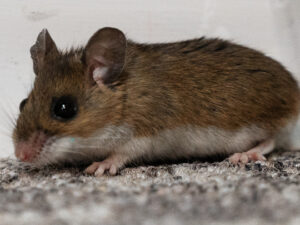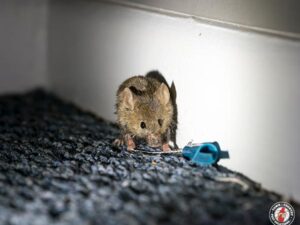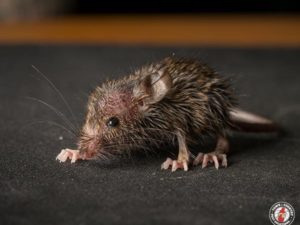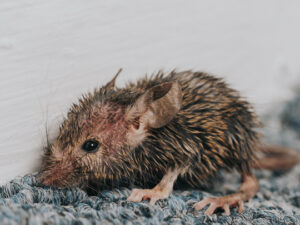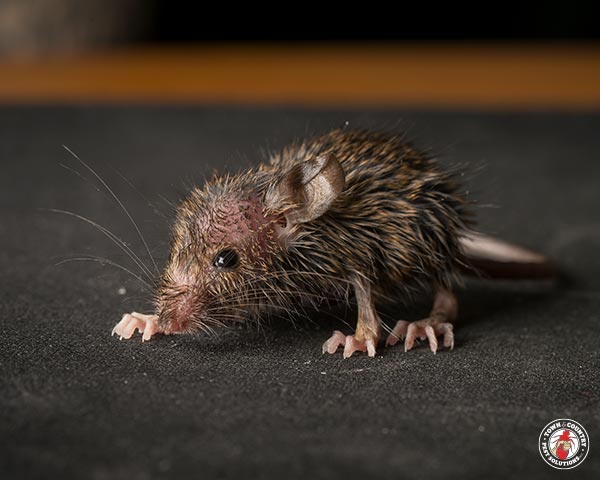
House mice are considered one of the most economically significant and troublesome rodent pests in the U.S. These rodents survive and thrive under a wide range of conditions around farms and homes. They eat food intended for pets or humans. They contaminate surfaces for preparing food in your home with their urine and feces. Their relentless gnawing causes damage to materials and property.
Identifying House Mice Infestations
Tracks, fresh gnawing, and droppings point out where house mice are active. Mouse nests, built from fine-chopped paper or other chewy material, are usually found in protected areas. A house mouse has a characteristic pungent smell that helps identify its presence. House mice are rarely active during daytime hours.
Prevention and Control
An effective mouse prevention and control plan involves population reduction, mouse-proof construction, and cleanliness. If your home already has an active mouse infestation, population reduction is always required. Mice reduction methods include poisoning and trapping.
Population Reduction
Two of the most commonly used mice population reduction techniques are poisoning and trapping. Poisoning involves using rodenticides to kill rodents. Rodenticides can be bought in garden centers, discount stores, feed stores, and other places that sell pesticides. Do not purchase rodent poison baits from uncertain vendors. Most poison baits cause death after they are eaten for a few days, although some types can cause death after single eating. Ensure that fresh bait is provided until mice stop eating. Depending on the population of mice on your property, this might require up to one month.
Trapping is an excellent way to reduce the mice population when only a small number of mice is present on your property. Traps are beneficial in that they do not contain hazardous poisons that can harm your health. They allow you to know whether the mouse has been killed or not. Trapping also allows for the removal of mouse bodies to avoid dead mouse odor that might occur when poisoning issued to kill rats
Mouse-Proof Construction
The most permanent and successful way to control house mice is by eliminating all entry points through which they can enter your home. All spaces where food is used, processed, or stored should be constructed mic-proof. Meat products and dried grains should be kept in metal canisters, glass jars, or other airtight containers. Cover any opening that is bigger than a quarter-inch to keep mice away. The material used for patching should have a smooth surface to prevent mice from chewing through it or pulling it out. Your doors and windows should have tightly fitting screens that are not chewable for mice.
Sanitation
Although proper sanitation will not keep away mice, poor sanitation will surely attract them and allow them to thrive in sizeable numbers. Mice can survive in places with limited amounts of shelter and food. Consequently, regardless of how good sanitation is, if your home stores or handles food, it can support mice if it is not mouse-proof.
House mice can be a nuisance and cause health problems to you and your family if not addressed. If you have an active mice infestation and are unable to control them, you can look for a professional from your local area to do the job for you. Always choose a licensed pest control professional to ensure the job is done effectively and efficiently.

